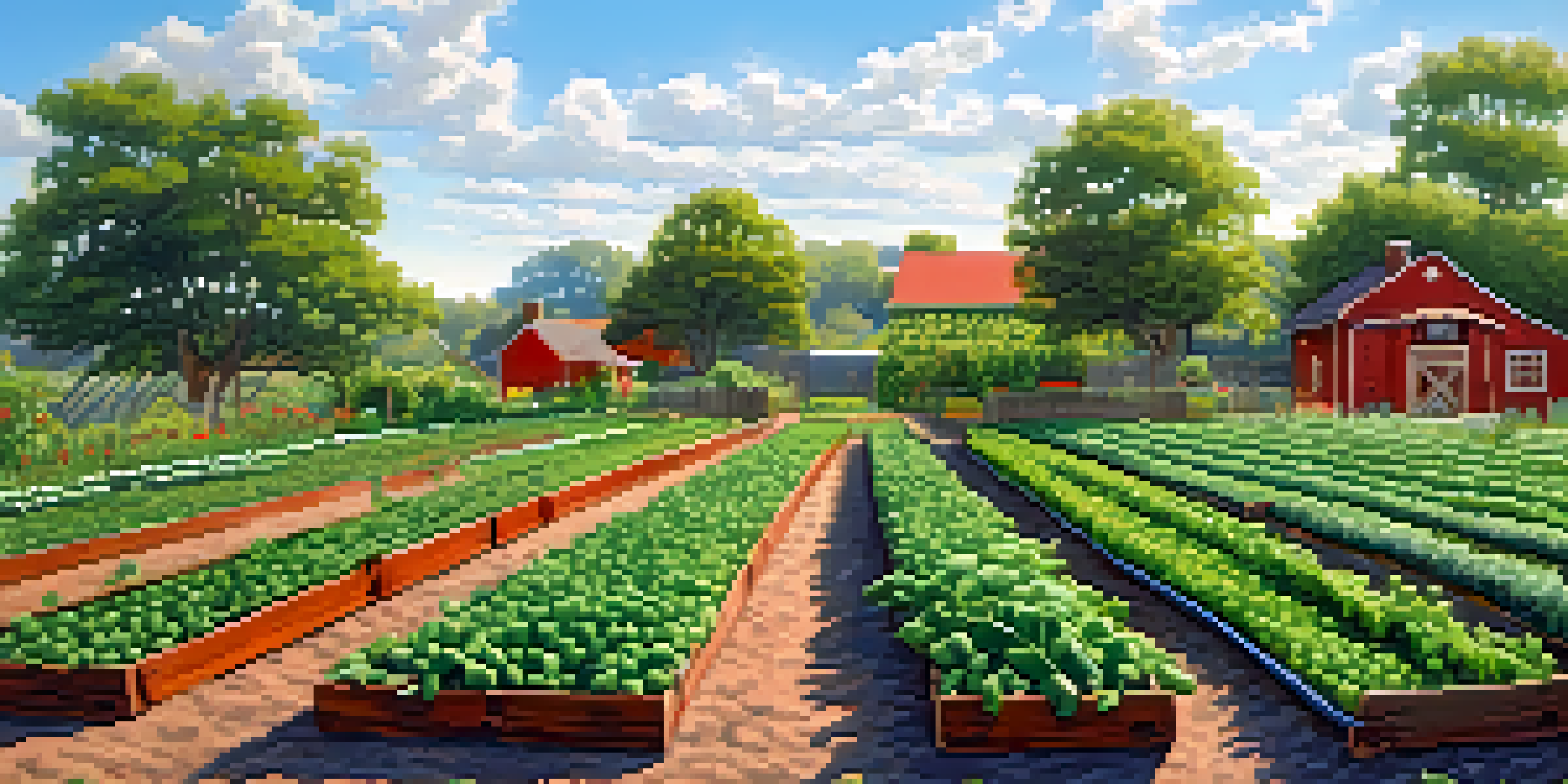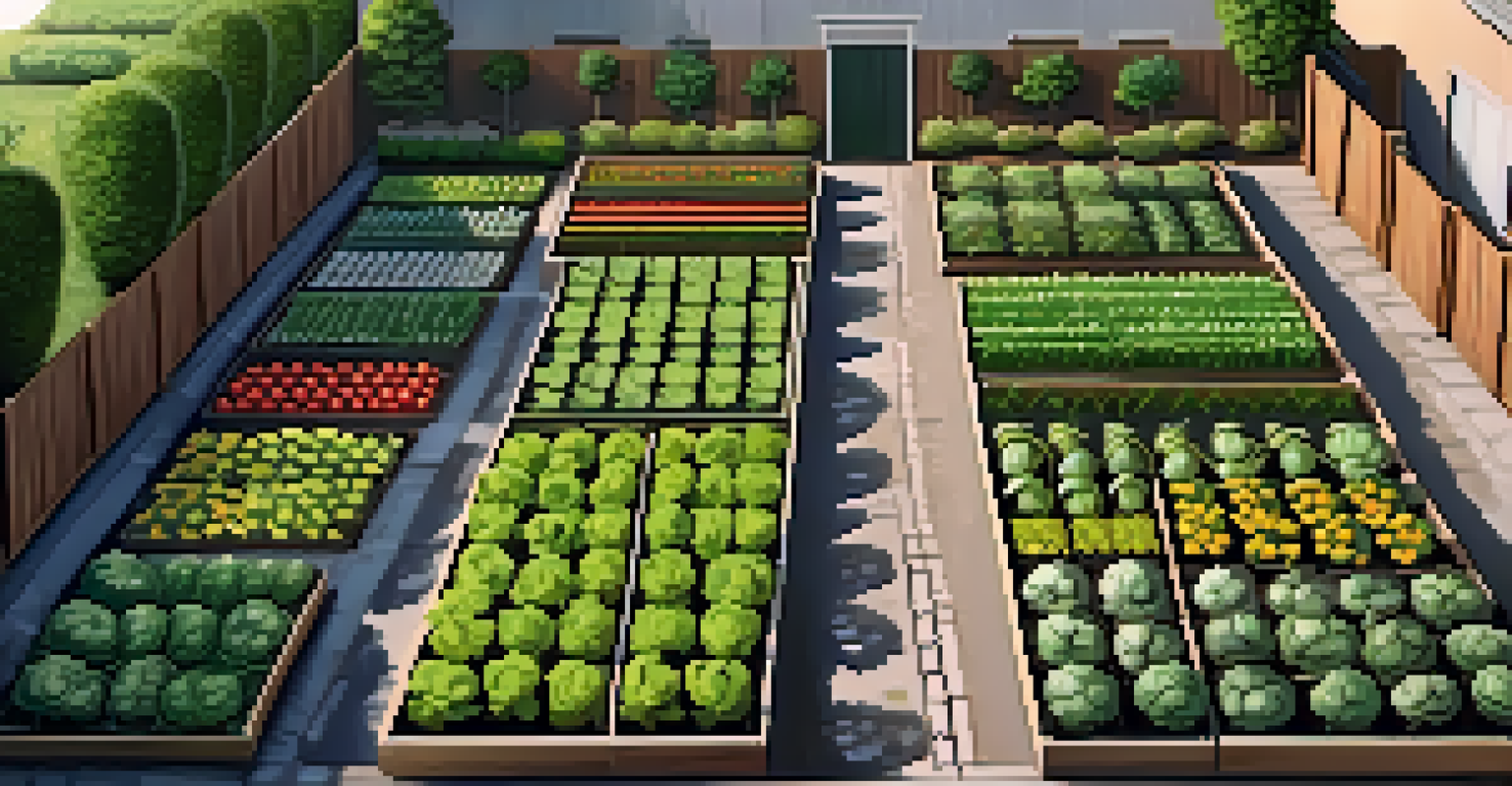Spring Planting Guide: Best Vegetables for the Season Ahead

Why Spring is the Perfect Time for Planting Vegetables
Spring marks a time of rejuvenation in nature, making it an ideal season for planting vegetables. As temperatures rise and days get longer, plants awaken from their winter slumber, ready to grow. This season offers the right balance of sunlight and moisture, which is crucial for seed germination and healthy plant development.
The greatest gift of the garden is the restoration of the five senses.
In addition to favorable weather, spring also encourages gardeners to engage with their outdoor spaces again. The excitement of watching seeds sprout and transform into vibrant plants can be incredibly rewarding. By planting in spring, you're not just growing food; you're nurturing a connection with nature that can last all year.
Moreover, starting your garden in spring allows you to maximize your growing season. By choosing the right vegetables, you can enjoy fresh produce throughout the warmer months, from early summer favorites to fall harvests. With proper planning, your garden can provide a bountiful yield!
Top Cool-Season Vegetables to Plant in Early Spring
Cool-season vegetables thrive in the cooler temperatures of early spring. Some of the best options include peas, lettuce, and spinach, all of which can tolerate light frosts. These vegetables grow quickly, allowing you to harvest them in a relatively short time frame, making them perfect for impatient gardeners.

For instance, peas are not only delicious and versatile but also fix nitrogen in the soil, enriching it for future plantings. Similarly, leafy greens like spinach and lettuce can provide fresh salads, boosting your meals with nutrients and flavor. They are incredibly easy to grow, making them great for beginners.
Spring is Ideal for Vegetable Growth
The combination of rising temperatures and longer days in spring creates optimal conditions for planting and nurturing vegetables.
Planting these cool-season vegetables as soon as the ground is workable can yield great results. Just make sure to sow them in well-drained soil and provide adequate sunlight. You'll be rewarded with crisp, fresh produce that tastes far better than store-bought options!
Best Warm-Season Vegetables for Late Spring Planting
Once the threat of frost has passed, it's time to shift focus to warm-season vegetables. These include favorites like tomatoes, peppers, and cucumbers, which thrive in the heat of summer. Planting them in late spring ensures they have a full growing season to develop and produce a bountiful harvest.
To plant a garden is to believe in tomorrow.
Tomatoes, for instance, are a gardener's delight, offering a variety of flavors and types. From juicy beefsteaks to sweet cherry tomatoes, there's something for every palate. Similarly, peppers add a vibrant splash of color to your garden and can range from mild to spicy, catering to all taste preferences.
Cucumbers are another fantastic choice, perfect for fresh salads or pickling. They grow quickly and can yield a large harvest from just a few plants. When planting these warm-season vegetables, be sure to provide support for vining plants and adequate spacing for optimal growth.
How to Prepare Your Garden Soil for Planting
Healthy soil is the foundation of a thriving vegetable garden. Preparing your garden soil involves several steps, starting with testing its pH and nutrient levels. A balanced pH, ideally between 6.0 and 7.0, is crucial for optimal plant growth, allowing them to absorb essential nutrients effectively.
Once you know your soil's condition, amend it as needed. Incorporating organic matter, like compost or well-rotted manure, can improve soil structure, retain moisture, and provide nutrients. This not only enriches the soil but also promotes beneficial microorganisms that help your plants flourish.
Key Cool and Warm-Season Veggies
Cool-season vegetables like peas and lettuce can be planted early, while warm-season favorites like tomatoes and peppers thrive once frost has passed.
Finally, tilling the soil to a depth of at least 12 inches helps aerate it and breaks up compacted layers. This allows roots to penetrate more easily, leading to healthier plants. Take the time to prepare your soil properly; it will pay off with a more productive garden filled with vibrant vegetables.
Understanding Plant Spacing for Optimal Growth
Plant spacing is a vital consideration in vegetable gardening that can significantly affect your yield. Each type of vegetable requires specific spacing to ensure they have enough room to grow and access nutrients. Crowding plants can lead to competition for resources, resulting in stunted growth and lower harvests.
For example, tomatoes usually need about 18-24 inches between each plant, while lettuce can be spaced much closer at around 6-12 inches. This spacing allows for proper air circulation, reducing the risk of disease. Taking the time to research the ideal spacing for each type of vegetable can lead to healthier plants and more abundant harvests.
When planning your garden layout, consider using a grid or raised bed system. This can help you visualize the space each plant will occupy and prevent overcrowding. Remember, giving your vegetables room to breathe will ultimately reward you with a more fruitful garden!
Watering Tips for Your Spring Vegetable Garden
Watering is a critical aspect of growing vegetables, especially during the spring when plants are establishing themselves. Consistent moisture is vital for seed germination and root development. However, it’s important to strike a balance; both overwatering and underwatering can harm your plants.
A good rule of thumb is to provide about an inch of water per week, either through rainfall or supplemental watering. Early morning is the best time to water, as it allows plants to absorb moisture before the heat of the day. Additionally, using mulch can help retain soil moisture and reduce the frequency of watering.
Soil Prep and Plant Care Essentials
Preparing healthy soil and understanding proper plant spacing and watering techniques are crucial for a thriving vegetable garden.
Always check the soil moisture before watering; sticking your finger into the ground can help determine if it feels dry. Healthy watering practices not only promote strong growth but also help prevent issues like root rot and fungal diseases. With the right care, your spring vegetable garden will thrive and produce a bountiful harvest!
Pest Management: Protecting Your Spring Vegetables
As your vegetables grow, they may attract pests that can threaten your harvest. Understanding common garden pests and how to manage them is crucial for a successful spring garden. Regularly inspecting your plants can help you catch any infestations early, allowing for prompt action.
Consider companion planting as a natural way to deter pests. For instance, marigolds can repel aphids and nematodes, while basil can help protect tomatoes from hornworms. Utilizing these natural deterrents can minimize the need for chemical pesticides, making your garden healthier and more sustainable.

Additionally, maintaining healthy soil and plants can help reduce pest problems. Strong plants are less susceptible to damage, while healthy soil promotes beneficial insects that prey on pests. Embracing an integrated pest management approach can create a thriving ecosystem in your garden, leading to a more fruitful harvest.